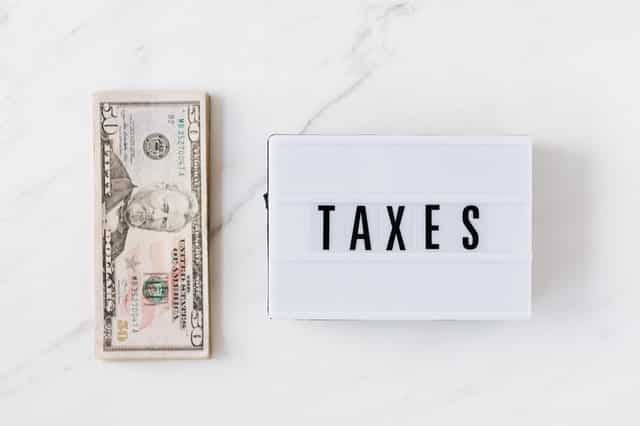Category Retirement Planning
Redefining Retirement Goals: From Rocking Chairs to Road Adventures

Redefining Retirement: The traditional notion of retirement, marked by leisurely days spent in quiet relaxation, is undergoing a profound transformation. The vision of retirement is changing dramatically. For decades, retirement conjured images of rocking chairs and golf courses. But the…
401k contribution limits 2024

401k contribution limits for 2024 are $23,000 per person, up from 22,500 in 2023. All 401k participants over the age of 50 can make a catch-up contribution of $7,500, for a total of $30,500 What is 401k? 401k is a…
Roth IRA Contribution Limits 2024

The Roth IRA contribution limits for 2024 are $7,000 per person, with an additional $1,000 catch-up contribution for people who are 50 or older. There is a $500 increase from 2023. Roth IRA income limits for 2024 Roth IRA contribution…
Smart Strategies for Reducing Taxes on Required Minimum Distributions

What is RMD? Required Minimum Distributions (RMDs) are mandatory withdrawals that individuals with tax-advantaged retirement accounts like Traditional IRAs, SEP IRAs, and 401k must take after reaching a certain age. These accounts come with certain tax advantages. Typical contributions are…
Last minute 401k moves to make in 2023

Last minute 401k moves to make in 2023 to boost your retirement savings. Do you have a 401k? These six 401k moves will help you grow your retirement savings and ensure that you take full advantage of your 401k benefits.…
401k contribution limits 2023

401k contribution limits for 2023 are $22,500 per person, up from 20,500 in 2022. All 401k participants over the age of 50 can make a catch-up contribution of $7,500, for a total of $30,000 What is 401k? 401k is a…
Roth IRA and why you probably need one – Updated for 2022

Roth IRA is a tax-exempt investment account that allows you to make after-tax contributions to save for retirement. The Roth IRA has a tax-free status. It is a great way to save for retirement and meet your financial goals without…
Wise 401k moves to make in 2022

Six wise 401k moves to make in 2022 to boost your retirement saving. Do you have a 401k? These five 401k moves will help you grow your retirement savings and ensure that you take full advantage of your 401k benefits.…
Maximizing Roth savings for high-income earners

Maximizing your Roth savings is a terrific way to save for retirement for both high-income earners and professionals at all levels. Roth IRA is a tax-free retirement savings account that allows you to make after-tax contributions to save towards retirement.…
401k contribution limits 2022

401k contribution limits for 2022 are $20,500 per person. All 401k participants over the age of 50 can add a catch-up contribution of $6,500. What is 401k? 401k plan is a workplace retirement plan where both employees and employers can…
Roth IRA Contribution Limits 2023

The Roth IRA contribution limits for 2023 are $6,500 per person with an additional $1,000 catch-up contribution for people who are 50 or older. There is $500 increase from 2022. Roth IRA income limits for 2023 Roth IRA contribution limits…
Roth IRA Contribution Limits 2022

The Roth IRA contribution limits for 2022 are $6,000 per person with an additional $1,000 catch-up contribution for people who are 50 or older. There is no change from 2021. Roth IRA income limits for 2022 Roth IRA contribution limits…
Achieving tax alpha and higher after tax returns on your investments

What is tax alpha? Tax Alpha is the ability to achieve an additional return on your investments by taking advantage of a wide range of tax strategies as part of your comprehensive wealth management and financial planning. As you know,…
Effective Roth Conversion Strategies for Tax-Free Growth

Roth conversion of your tax-deferred retirement savings can be a brilliant move. Learn the must-know rules and tax implications of Roth Conversion before you decide if it is right for you. What is a Roth Conversion? Roth Conversion is the…
5 smart 401k moves to make in 2021

5 smart 401k moves to make in 2021 to boost your retirement saving. Do you have a 401k? These five 401k moves will help you grow your retirement savings and ensure that you take full advantage of your 401k benefits.…
Understanding Tail Risk and how to protect your investments

What is Tail Risk? Tail Risk is the possibility of suffering large investment losses due to sudden and unforeseen events. The name tail risk comes from the shape of the bell curve. Under normal circumstances, your most likely investment returns…
10 practical ways to pay off debt before retirement

Pay off debt before retirement is a top priority for many of you who are planning to retire in the near future. In my article Retirement Checklist, I discussed a 12-step roadmap to planning a successful and carefree retirement. One…
Benefits and drawbacks to buying Indexed Universal Life Insurance

Today, I am going off the beaten path for me and will discuss the pros and cons of buying Indexed Universal Life Insurance. As a fee-only advisor, I do not sell any insurance or commission-based products. However, on numerous occasions,…
401k contribution limits 2021

401k contribution limits for 2021 are $19,500 per person. All 401k participants over the age of 50 can add a catch-up contribution of $6,500. What is 401k? 401k plan is a workplace retirement plan where both employees and employers can…
Roth IRA Contribution Limits 2021

The Roth IRA contribution limits for 2021 are $6,000 per person with an additional $1,000 catch-up contribution for people who are 50 or older. Roth IRA income limits for 2021 Roth IRA contribution limits for 2021 are based on your…
Contact Us

